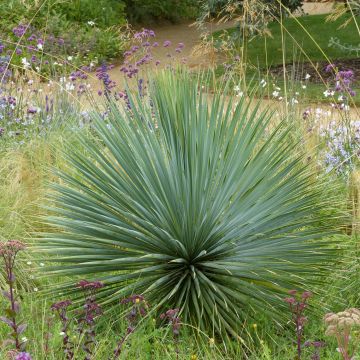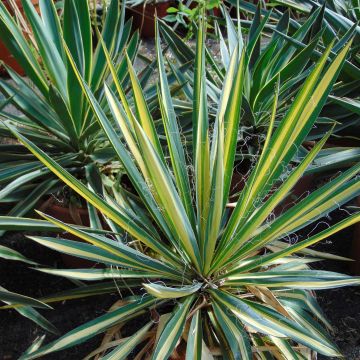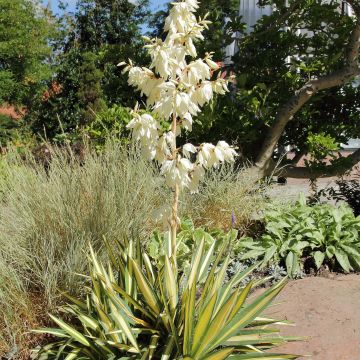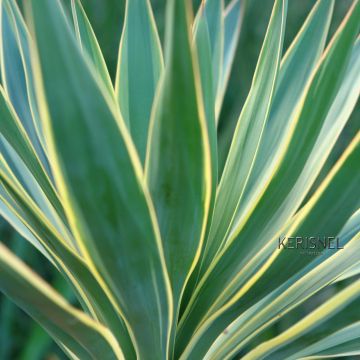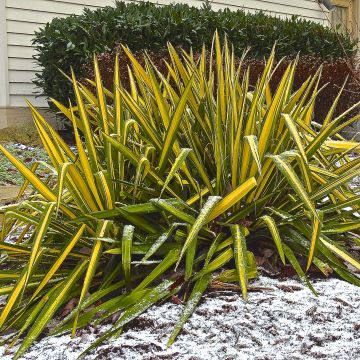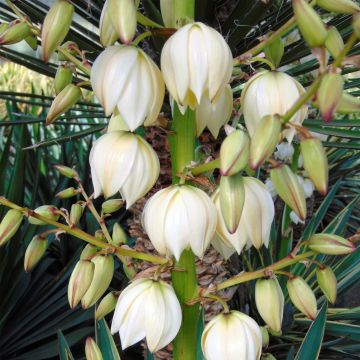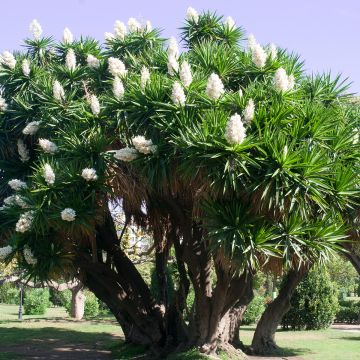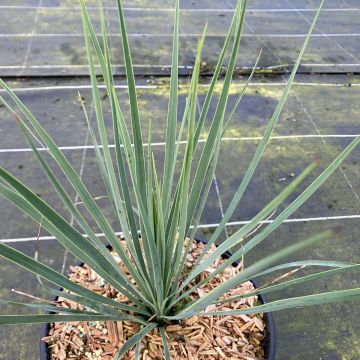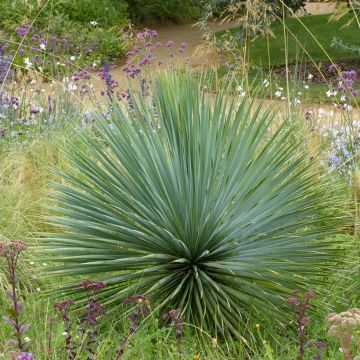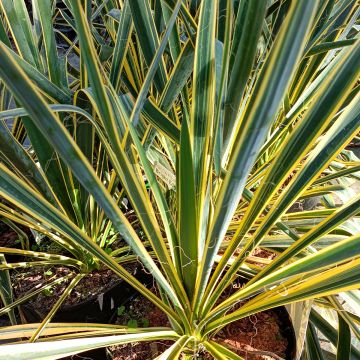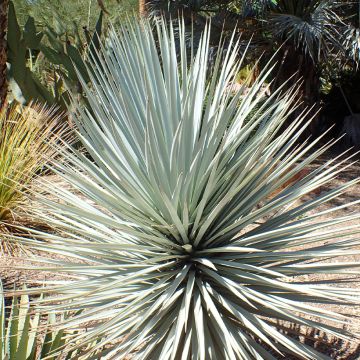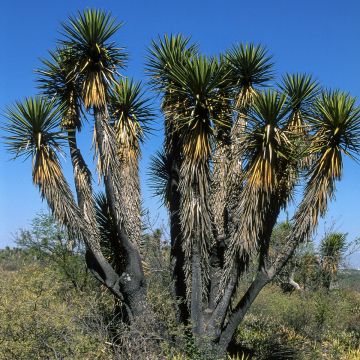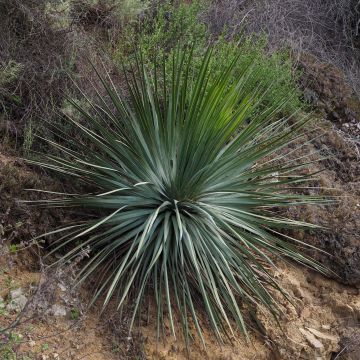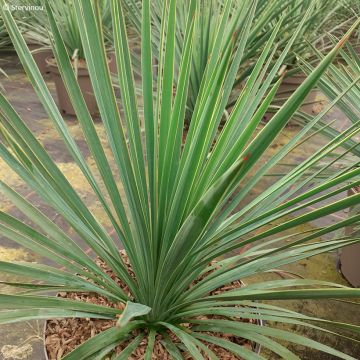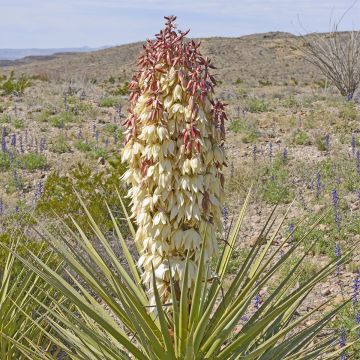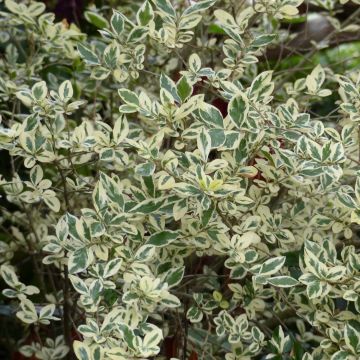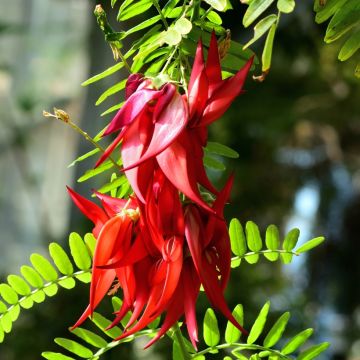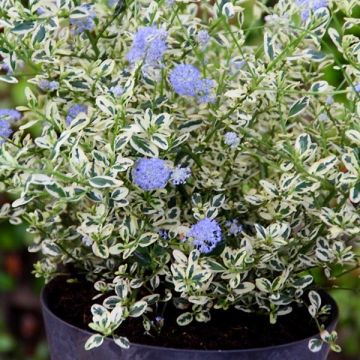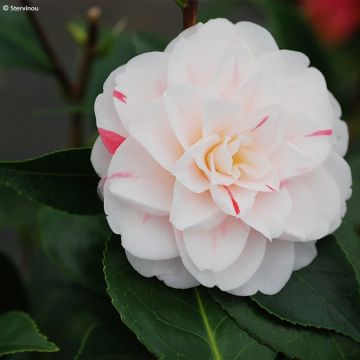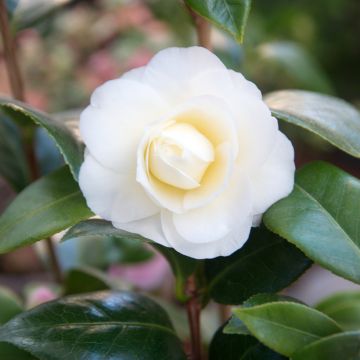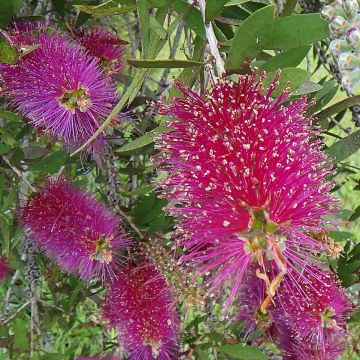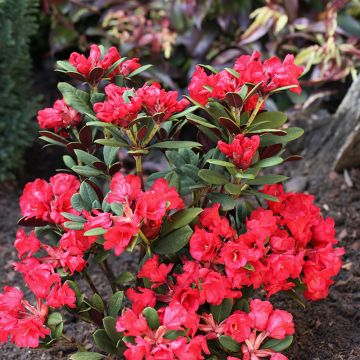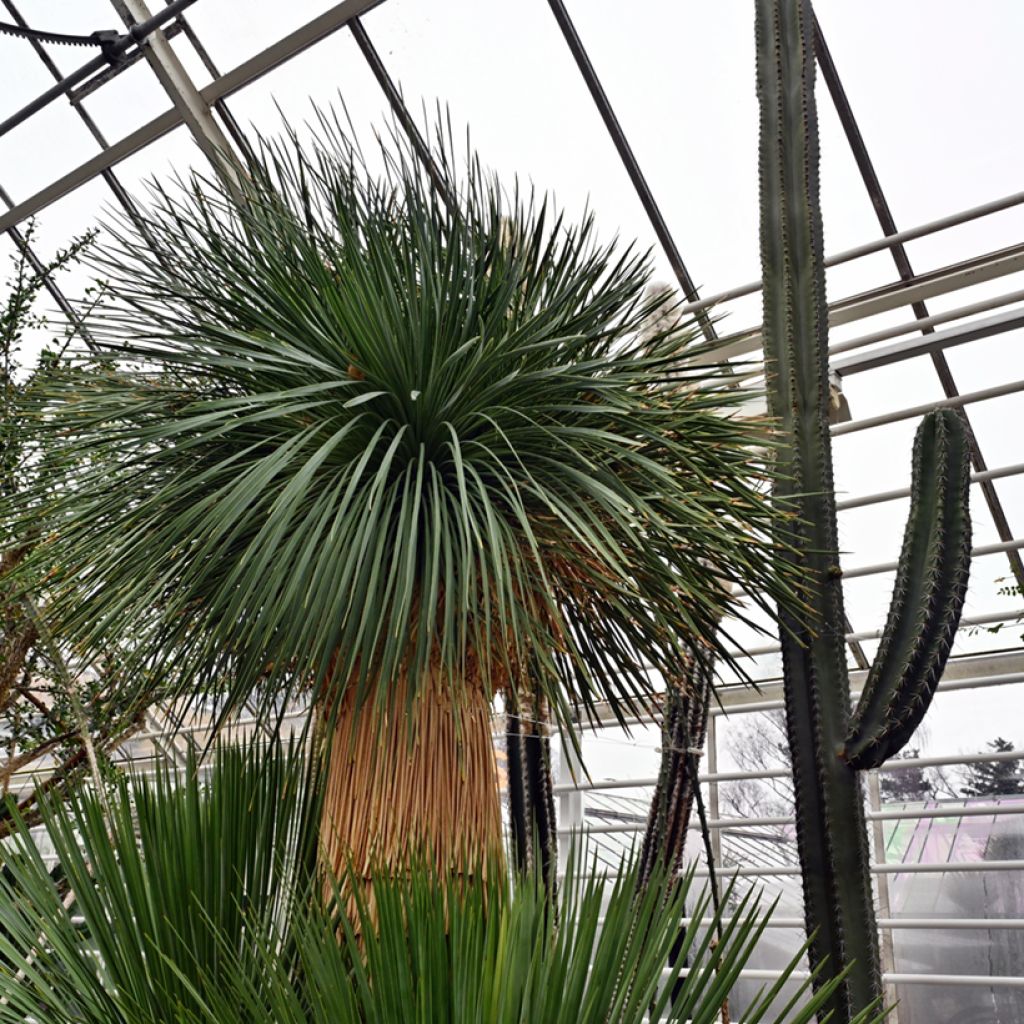

Yucca linearifolia GreenFin
Yucca linearifolia GreenFin
Yucca linearifolia GreenFin
Why not try an alternative variety in stock?
View all →This plant carries a 24 months recovery warranty
More information
We guarantee the quality of our plants for a full growing cycle, and will replace at our expense any plant that fails to recover under normal climatic and planting conditions.
From €5.90 for pickup delivery and €6.90 for home delivery
Express home delivery from €8.90.
Does this plant fit my garden?
Set up your Plantfit profile →
Description
Yucca linearifolia 'GreenFin' is a spectacular tree-like plant, with a desert charm, hardy in many regions. This variety of Yucca with linear leaves forms one or more trunks topped with a sphere composed of very fine, rigid, green leaves that become bluish in summer, playing with the light. After a few years, this variety will become the centrepiece of a large rock garden or exotic bed. Give it sun and well-drained, sandy or rocky soil.
Yucca linearifolia 'GreenFin' is a French horticultural selection by Frédéric Julien. The species, the Yucca with linear leaves, is native to the Chihuahuan Desert in the Mexican states of Coahuila and Nuevo Leon. It is a species closely related to Yucca rostrata known to be less sensitive to winter moisture and to have slightly faster growth. Yucca linearifolia can withstand temperatures to around -15°C in well-drained soil, and summer drought. It is a tree-like plant belonging to the asparagus family.
When young, the 'GreenFin' Yucca forms a dense, hairy ball composed of fine, long, finely toothed, rigid leaves. After several years, it forms a 2m tall trunk covered with a 'skirt' of dry leaves, which can branch out. This trunk bears a large spherical crown 1m to 1.20m wide, composed of a multitude of leaves. The leaves are initially grass green, then become bluish due to the layer of wax that forms on their epidermis. They measure 40 to 60cm in length and 5 to 7mm in width. The spectacular flowering occurs after 3 to 4 years of cultivation, from May to July. In this variety, the inflorescence is unique and emerges distinctly from the foliage. It develops into a large ovoid panicle. The bell-shaped, pendulous flowers are creamy yellow and waxy. They are borne on upright and branched panicles measuring 50 to 80cm high and carried at over 4m in height. When watered during the summer, this Yucca shows rapid growth. It produces a few shoots near its crown.
The 'GreenFin' Yucca requires plenty of sun and well-drained, rather poor and dry soil. It particularly dislikes waterlogged soils in winter. This beautiful plant will find a place on a large slope, in the centre of an exotic or contemporary rock garden, or even near a swimming pool. It should be kept away from walkways and young children, due to its sharp-pointed leaves. This large plant will simply be magnificent as a specimen, accompanied by a carpet of snow-in-summer (Cerastium), or even a lawn of Zoysia tenuifolia, the Mascarene grass. In a rocky setting, it can also be associated with agaves, prickly pears (Opuntia), and hardy candle cacti like Cylindropuntia imbricata. It can also be planted in a very large pot on the terrace. Choose the most sheltered spot, in full sun, and away from foot traffic to avoid contact with its sharp leaves.
Report an error about the product description
Plant habit
Flowering
Foliage
Botanical data
Yucca
linearifolia
GreenFin
Asparagaceae
North America
Other Yucca
Planting and care
Plant Yucca linearifolia GreenFin in spring, in a very sunny and sheltered location if your garden is in a borderline hardiness zone. An adult specimen will withstand brief frosts of around -15°C. Its growth is quite slow, boosted by generous but spaced waterings in summer, and fertile soil. In mild climates, plant in autumn, especially in regions with hot and dry summers. This plant hates very clayey soils and humidity, particularly when combined with severe cold: plant in well-drained soil, ideally in a large rockery, a raised bed with gravel-enriched soil, or a rocky slope. It is not fussy about soil pH, which can be slightly acidic, sandy, stony, loamy, or limestone. It tolerates poor soil, but its growth will be slightly faster in soil that is still fertile. Monitor watering during the first 2 years, especially in hot and dry periods. Remove faded stems.
Your Yucca is superb, but it doesn't flower? It is probably too young, or has only been planted in your garden for 3 or 4 years. This plant takes time to establish itself and only flowers after several years. Then, depending on the sunlight and climate, it will flower every year, or every two or three years.
Fertilisation in yuccas:
In their countries of origin, Yucca flowers are pollinated only by a few species of tiny primitive butterflies without proboscis that live in symbiosis with the plant, such as Prodoxus. The female of these butterflies carries pollen grains from one flower to the pistil of another. She lays a few eggs at the base of the flower. The young caterpillars feed on some of the seeds. Since Prodoxus is not part of our fauna, most yuccas cultivated in our gardens never produce fruits. Only Yucca aloifolia is capable of it, because its pollination does not depend on the presence of these micromoths.
Planting period
Intended location
Care
This item has not been reviewed yet - be the first to leave a review about it.
Evergreen shrubs
Haven't found what you were looking for?
Hardiness is the lowest winter temperature a plant can endure without suffering serious damage or even dying. However, hardiness is affected by location (a sheltered area, such as a patio), protection (winter cover) and soil type (hardiness is improved by well-drained soil).

Photo Sharing Terms & Conditions
In order to encourage gardeners to interact and share their experiences, Promesse de fleurs offers various media enabling content to be uploaded onto its Site - in particular via the ‘Photo sharing’ module.
The User agrees to refrain from:
- Posting any content that is illegal, prejudicial, insulting, racist, inciteful to hatred, revisionist, contrary to public decency, that infringes on privacy or on the privacy rights of third parties, in particular the publicity rights of persons and goods, intellectual property rights, or the right to privacy.
- Submitting content on behalf of a third party;
- Impersonate the identity of a third party and/or publish any personal information about a third party;
In general, the User undertakes to refrain from any unethical behaviour.
All Content (in particular text, comments, files, images, photos, videos, creative works, etc.), which may be subject to property or intellectual property rights, image or other private rights, shall remain the property of the User, subject to the limited rights granted by the terms of the licence granted by Promesse de fleurs as stated below. Users are at liberty to publish or not to publish such Content on the Site, notably via the ‘Photo Sharing’ facility, and accept that this Content shall be made public and freely accessible, notably on the Internet.
Users further acknowledge, undertake to have ,and guarantee that they hold all necessary rights and permissions to publish such material on the Site, in particular with regard to the legislation in force pertaining to any privacy, property, intellectual property, image, or contractual rights, or rights of any other nature. By publishing such Content on the Site, Users acknowledge accepting full liability as publishers of the Content within the meaning of the law, and grant Promesse de fleurs, free of charge, an inclusive, worldwide licence for the said Content for the entire duration of its publication, including all reproduction, representation, up/downloading, displaying, performing, transmission, and storage rights.
Users also grant permission for their name to be linked to the Content and accept that this link may not always be made available.
By engaging in posting material, Users consent to their Content becoming automatically accessible on the Internet, in particular on other sites and/or blogs and/or web pages of the Promesse de fleurs site, including in particular social pages and the Promesse de fleurs catalogue.
Users may secure the removal of entrusted content free of charge by issuing a simple request via our contact form.
The flowering period indicated on our website applies to countries and regions located in USDA zone 8 (France, the United Kingdom, Ireland, the Netherlands, etc.)
It will vary according to where you live:
- In zones 9 to 10 (Italy, Spain, Greece, etc.), flowering will occur about 2 to 4 weeks earlier.
- In zones 6 to 7 (Germany, Poland, Slovenia, and lower mountainous regions), flowering will be delayed by 2 to 3 weeks.
- In zone 5 (Central Europe, Scandinavia), blooming will be delayed by 3 to 5 weeks.
In temperate climates, pruning of spring-flowering shrubs (forsythia, spireas, etc.) should be done just after flowering.
Pruning of summer-flowering shrubs (Indian Lilac, Perovskia, etc.) can be done in winter or spring.
In cold regions as well as with frost-sensitive plants, avoid pruning too early when severe frosts may still occur.
The planting period indicated on our website applies to countries and regions located in USDA zone 8 (France, United Kingdom, Ireland, Netherlands).
It will vary according to where you live:
- In Mediterranean zones (Marseille, Madrid, Milan, etc.), autumn and winter are the best planting periods.
- In continental zones (Strasbourg, Munich, Vienna, etc.), delay planting by 2 to 3 weeks in spring and bring it forward by 2 to 4 weeks in autumn.
- In mountainous regions (the Alps, Pyrenees, Carpathians, etc.), it is best to plant in late spring (May-June) or late summer (August-September).
The harvesting period indicated on our website applies to countries and regions in USDA zone 8 (France, England, Ireland, the Netherlands).
In colder areas (Scandinavia, Poland, Austria...) fruit and vegetable harvests are likely to be delayed by 3-4 weeks.
In warmer areas (Italy, Spain, Greece, etc.), harvesting will probably take place earlier, depending on weather conditions.
The sowing periods indicated on our website apply to countries and regions within USDA Zone 8 (France, UK, Ireland, Netherlands).
In colder areas (Scandinavia, Poland, Austria...), delay any outdoor sowing by 3-4 weeks, or sow under glass.
In warmer climes (Italy, Spain, Greece, etc.), bring outdoor sowing forward by a few weeks.

































